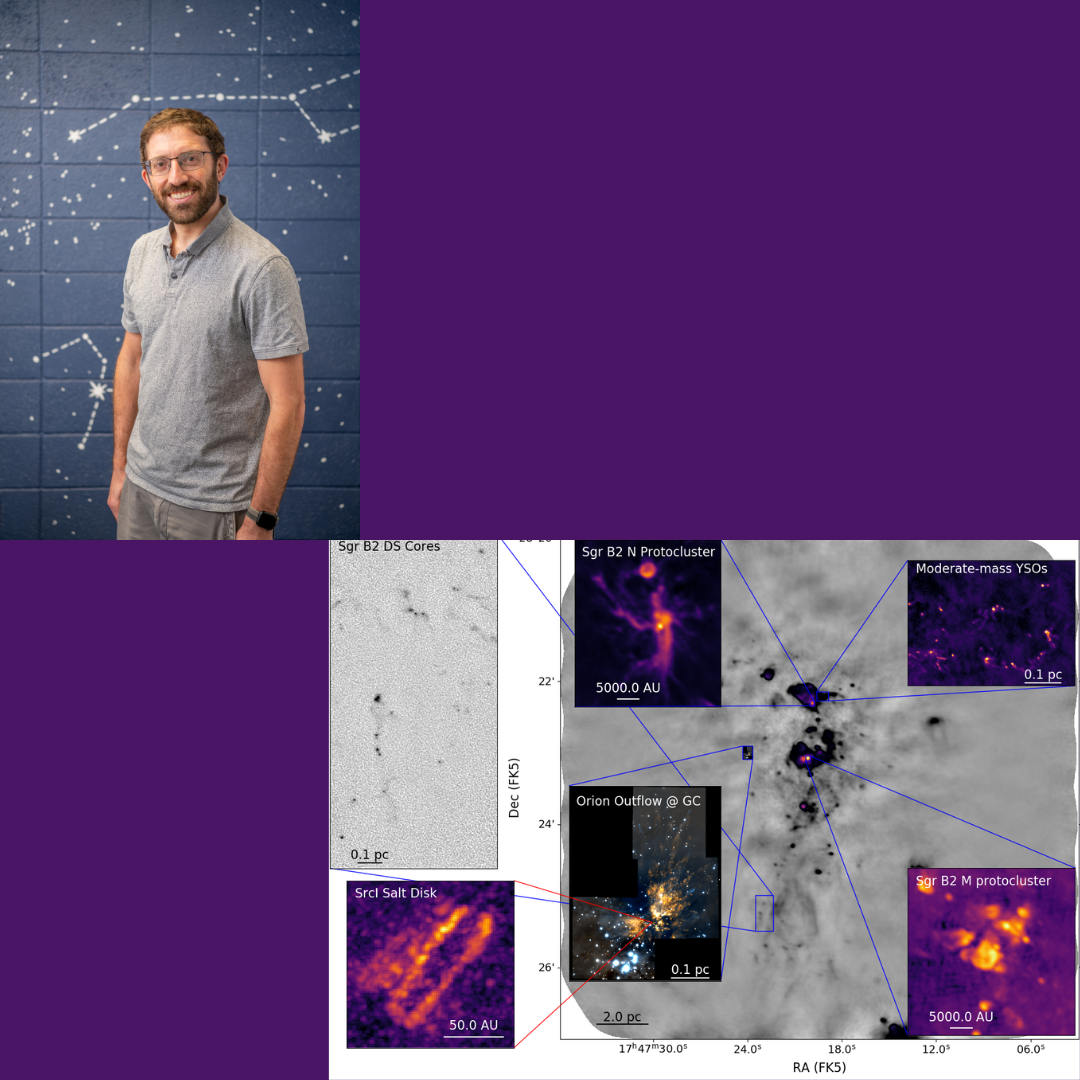Science and Mathematics
Physics Colloquium: Adam Ginsburg
March 30, 2023 at 3:30pm – 5:00pm EDT
Physics Building, 202
This event has already occurred. The information may no longer be valid.

The Department of Physics is pleased to welcome Professor Adam Ginsburg for an in-person colloquium on Thursday, March 30, 2023. Ginsburg is an assistant professor at the University of Florida’s Department of Astronomy. His research focuses on massive star and cluster formation, the IMF, turbulence, and the Central Molecular Zone. Prof. Ginsburg studies the formation of the most massive stars and how their formation process affects their neighbors, with the aim of understanding what physical processes control the stellar initial mass function. He uses primarily radio and millimeter telescopes to measure the molecular interstellar medium, which is the gas phase from which stars form. Turbulence and chemistry are the two most important and least understood processes that affect both how the stars form and how we detect their birth environments, so his research includes these fields by necessity. Ginsburg is also interested in the maintenance and development of new tools to facilitate observational astronomy and comparison between simulations and observations.
He began his career as an undergraduate at Rice University, with a B.S. in Astrophysics, in 2007. He did his PhD at the University of Colorado (2013), working with Prof. John Bally. He was a European Southern Observatory (ESO) fellow in Garching, Germany (postdoc; 2013-2016) then a Jansky fellow at the National Radio Astronomy Observatory (NRAO) in Socorro, New Mexico (postdoc; 2016-2019) before going to UF.
Abstract:
Star Formation and Mass Measurements in the Galaxy
The most important factor deciding the fate of a star and its surroundings is its initial mass. The relative number of high- and low-mass stars decides how much light and mass escape from a population of stars. This distribution, the stellar initial mass function, is often assumed to be universally invariant, though we have plenty of reason to believe it varies with environment. I will present results from several ALMA programs that measure the mass distribution of pre- and proto-stellar objects at early phases. Denser regions of our Galaxy, like its center, form more stars in clusters than do the outskirts where the Sun resides. Core mass function measurements suggest that more intensely star-forming regions preferentially form high-mass stars. However, the measurements of individual young stars remain subject to large systematic uncertainties that make a direct interpretation of mass function measurements difficult. I will outline our path to resolving these problems through dynamical mass measurements with brinary disks, high resolution ALMA and JWST observations, and population modeling.
This event was first published on January 25, 2023 and last updated on March 27, 2023.
Event Details
- Category
- Science and Mathematics
- Type
- Talks
- Region
- Campus
- Open to
- Faculty,
- Graduate & Professional Students
- Organizer
- CAS-Department of Physics
- Contact
- Cassandra Ellis
phyadmin@syr.edu
315-443-3901
- Accessibility
- Contact Cassandra Ellis to request accommodations
